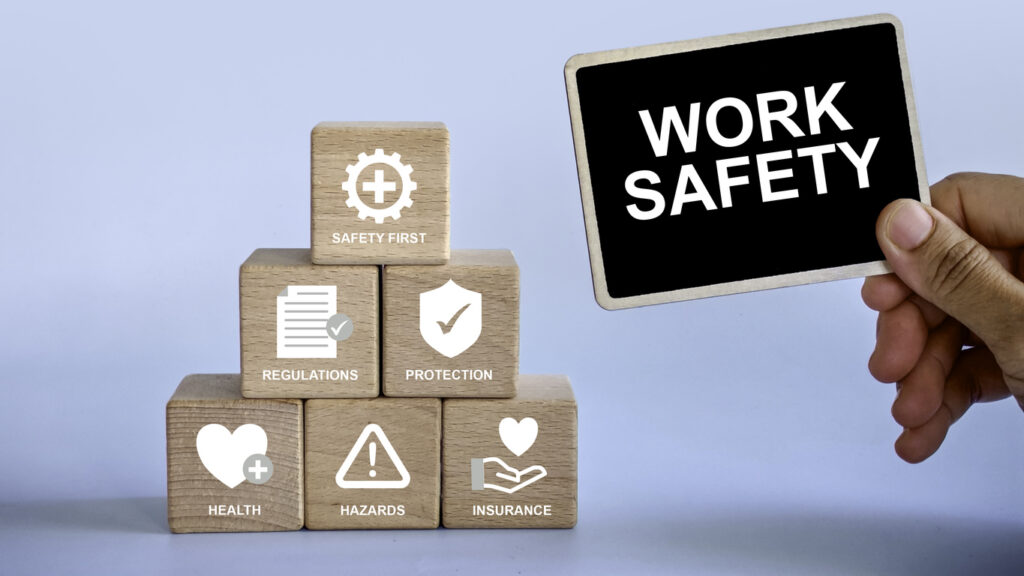Introduction
I’ve always maintained that health and safety isn’t a box-ticking exercise. It’s really about looking after people. When the workplace is safe, everyone feels more comfortable doing their job, and things naturally run better. It also makes sense from a business point of view. Fewer accidents mean less time off and fewer problems down the line. It’s one of those areas where doing the right thing benefits everyone.
Establishing clear health and safety procedures benefits everyone. Employees are more likely to feel valued and supported, while employers see gains in productivity, morale, and reputation. The type of workplace doesn’t matter; whether it’s an office, factory floor, or construction site, the goal will always be the same: to prevent harm and promote a positive, secure environment for all.
Understanding who is responsible for workplace safety is key to achieving this. You can read more in our “Who Is Responsible for Health and Safety in the Workplace” article.
If you’re looking to improve your approach to health and safety, investing in quality training is a great place to start. Explore our accredited range of health and safety courses and see how RRC can help your team stay safe.
What Is Workplace Health and Safety?
It’s all about keeping people from getting injured, sick, or quietly losing the will to live in unsafe working conditions. It covers everything from avoiding tripping over loose cables to making sure nobody is inhaling mystery fumes from a worn piece of machinery that has clearly had its day.
Both employers and employees have a role to play. Bosses need to provide a safe environment, and workers need to follow the rules and, preferably, not treat safety signs like wallpaper.
A clear health and safety policy ensures everyone knows what’s expected of them. And if you’re wondering exactly who’s meant to do what, we cover that in our article on who’s responsible for health and safety in the workplace. Alternatively, if you’re thinking “I’ve got no idea where to start,” then have a look at our range of health and safety training courses for a better picture.
The Importance of a Good Workplace Health and Safety Policy
A decent health and safety policy isn’t just there for show. It actually helps you:
- Keep your workplace alive and well
- Avoid costly legal disasters
- Keep things running smoothly
- Make your workplace less like a deathtrap
- Build a better work culture
- Improve your reputation
The Legal Side
In the UK, health and safety laws aren’t optional. The Health and Safety at Work etc. Act 1974 is perhaps the most recognisable one. This Act establishes clear responsibilities for both employers and employees, emphasising that the onus is on all parties when it comes to maintaining a safe and healthy working environment.
There’s also the Management of Health and Safety at Work Regulations 1999, which says employers must actually assess risks and plan for them, rather than just hoping for the best.
If you ignore all of this, you could face:
- Fines
- Court appearances
- A loss of reputation
If you would like to learn about how to assess risks properly, check out our article on risk assessments.
What Happens When You Get It Wrong?
To put it bluntly, if you ignore health and safety, things can go very wrong. According to the Health and Safety Executive (HSE):
- Millions of working days are lost every year because people are injured or ill from work
- Over a million people say their illness is caused by their job
- Hundreds of thousands are injured at work
- Nearly one person a day dies from workplace accidents
That’s not including the long-term effects of things like exposure to hazardous materials and other work-related illness.
How to Improve Health and Safety
Whilst you don’t need a law degree to get this part right, there are a few things that you should view as non-negotiable:
- Write a policy – one that people can actually read and understand. Keep the legal jargon to a minimum.
- Train your staff properly – ongoing training makes a real difference.
- Use decent equipment – if something’s held together with duct tape and prayers, it’s time to replace it.
- Stay up to date – safety legislations and laws change all the time and so should your policies really.
- Build a safety culture – one where people speak up if something’s unsafe, instead of taking a mental note and walking away
Oh, and here’s an even better idea: invest in actual, proper training from professionals. RRC offers workplace HSE training which can be delivered in-company throughout the world.
Final Thoughts
You know the one. The office with the dodgy stairs. The warehouse with no first aid kit in sight. The place where everyone’s quietly thinking about leaving. Poor workplace health and safety doesn’t just put people at risk. It eats away at morale, lowers productivity, and can land a business in serious legal trouble.
Health and safety should be viewed as more than mere compliance. It’s about genuinely looking after people, building trust, and creating a safe working environment where teams feel safe and valued. It might not be glamorous, but it works.
If you’re ready to take the first step, explore our health and safety training courses.

Leave a Reply
You must be logged in to post a comment.